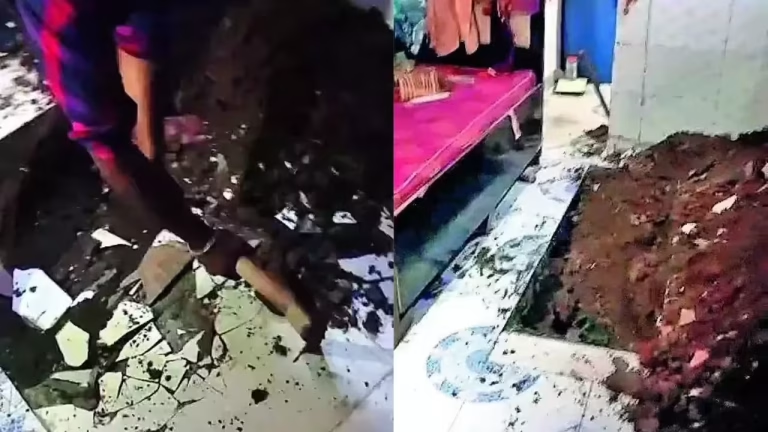
Kavach कवच

With the help of Kavach technology, Indian Railways will ensure the safety of the Virar-Churchgate corridor in Mumbai.
What exactly is the Kavach technology?
Kavach is an advanced ATP system that was developed with the purpose of reducing the risk of train crashes and enhancing operational safety. This facility makes use of the radio frequency identification (RFID) systems that are present at stations, trains, and tracks. Kavach will automatically apply the brakes to the train in the event that a loco pilot fails to respond appropriately to a red signal. Additionally, the technology is able to identify approaching trains that are traveling on the same tracks, thereby preventing crashes and notifying the loco pilot of any potential dangers.
The purpose of the Kavach system at the train station
Vaishnaw started a separate initiative to install the Kavach system at railway stations. The overall goal of this initiative is to cover about 8,000 stations all over the country. By taking this action, the goal is to improve communication between trains and stations, which will ultimately lead to an increase in overall safety.
As to why is it necessary?
As a result of the Kanchenjunga train tragedy that occurred in June 2024 and resulted in eleven fatalities, the urgency to increase Kavach coverage has been amplified. The fact that Kavach was not present along the route brought to light the necessity of implementing it more broadly. This was the fourth significant rail catastrophe that had occurred in the previous year, including the fatal triple-train collision that occurred in Balasore, Odisha, in June 2023, which resulted in the lost lives of 293 people. Importantly, Kavach was not functioning on any of these channels at any point in time.
| Important Information:
· Projected Price: 70 lakh rupees each · Projected Completion Date: 2025 · Permits trains to move at acceptable rates. · Makes it easier for loco pilots to avoid SPAD collisions. · Offers constant monitoring of speed. · Shows the loco pilot the movement authority and signal features from within the cab. · Provides safety in the event of an accident.
|
Progress on the Project
Between the months of October 2022 and December 2023, four contracts were issued for the installation of Kavach, spanning a total of 789 kilometers of tracks and 90 locomotives. The project is anticipated to be finished within a period of twenty-four months. The loco trials have been successfully carried out over a distance of 405 kilometers up to this point, and the target is to traverse 735 kilometers by the fiscal year 2024-25.
In December of 2023, a contract was granted for the 54-kilometer portion that extends from Mumbai Central to Virar, and survey work is presently being carried out. However, this phase of the project will only apply to trains that travel large distances; it will not apply to the train network that serves suburban areas.
The Indian Railway Ministry is implementing Kavach, an upgraded Automatic Train Protection (ATP) system, throughout the Western Railway Zone, which is 789 kilometers long. This includes a 56-km section in Mumbai, from Churchgate to Virar. If a loco pilot disregards red signals, Kavach will activate the train braking systems automatically to avert crashes. In addition, it can identify when other trains are using the same tracks as the loco, so it can prevent accidents and notify the pilot of the impending danger. We anticipate that by 2025, the project, which has a per-unit cost of Rs 70 lakh, will be completely functioning. In October 2022 and December 2023, contracts were awarded with a 24-month completion term to install Kavach on 789 km of rails and 90 locomotives. The 405 km of successful loco testing have set a goal of covering 735 km in FY 2024-25. The contract for the 54 km suburban segment from Mumbai Central to Virar, which was awarded to Kavach on December 27, 2023, would only be utilized for long-distance trains; suburban trains will not be a part of it. The Western Railway believes that by using Kavach, operational efficiency and safety will be greatly improved.
Present position
Right now, four contracts were given out in October and December 2022 to put Kavach on 789 km of tracks and 90 locos. The work has to be done in 24 months. Loco trials have been successful for 405 km of the 789 km that need to be done. The goal for FY 2024–25 is to go 735 km.
The official word
Western Railway’s Chief Public Relations Officer, Vineet Abhishek, talked about how important Kavach is, saying, “The Kavach system will significantly improve safety and operational efficiency.” Even though it’s still being tested, we expect it to be put into use soon. Kavach will be very important in lowering SPAD events and avoiding possible collisions, which will make things safer overall.
An improvement to prior versions of the Kavach software
The existing network, which is currently running on earlier versions of Kavach, will be upgraded to Kavach 4.0 in the near future.The following four years will see Kavach expand its operations to encompass all different kinds of geographical territories and locomotives. Kavach 4.0 is already being installed in all of the latest generation of locomotives. Over the course of the next four years, we intend to have Kavach installed on 20,000 locomotives.






